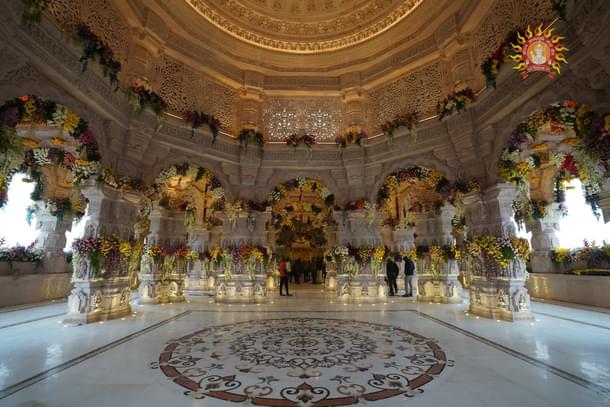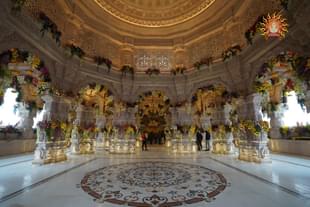News Brief
Lifespan of 1000 Years, No Iron Or Steel, No Cement Or Mortar Joints: Five Points On How Ram Mandir Is An Architectural Marvel
Nishtha Anushree
Jan 21, 2024, 12:24 PM | Updated 12:24 PM IST
Save & read from anywhere!
Bookmark stories for easy access on any device or the Swarajya app.


When the chairperson of the temple construction committee of the Shri Ram Janmabhoomi Teerth Kshetra Trust asserts that the temple, set to be inaugurated tomorrow, has been made to last more than a thousand years, we are amused.
However, when chairperson Nripendra Misra elaborates on his assertion, we get his point. Here are five architectural highlights of Ram Janmabhoomi Mandir:
1. No iron or steel has been used in the temple because the life of iron is merely 80-90 years and the trust wants it to last for centuries. Instead, the best quality granite, sandstone, and marble are used.
2. Similarly, there is no use of cement or lime mortar in the joints, but the structure uses a lock and key mechanism involving groves and ridges, according to Dr Pradeep Kumar Ramancharla, involved in the construction project.
3. To make the structure earthquake resistant, an engineered soil was laid to 12-14 metre of depth and then 47 layered bases were compacted. This makes the foundation like a solid rock.
4. Above the foundation, there is a plinth of 6.3 metre in height which is made of solid granite stone extracted from southern India. Below the plinth is a 1.5 metre thick M-35 grade metal-free concrete raft for reinforcement.
5. Central Building Research Institute, Roorkee says that the model was finalised after analysing 50 models. The temple is safe against a 2500-year return period earthquake and designed for a 1000-year lifespan.
Nishtha Anushree is Senior Sub-editor at Swarajya. She tweets at @nishthaanushree.





